Companion plants, it’s like the new buzz word, but what does it mean? How does it work? And why bother?
That’s what this post is all about, the what, how, and why of companion planting. With a few examples along the way. Let’s get straight into it.
What Are Companion Plants?
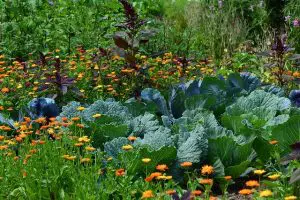
In a nut shell, companion plants are plants that are grown close together for their mutual or singular benefit. For instance, growing basil in with tomatoes will improve the growth and flavour of the tomatoes, and repel many pests too. Another example is growing the 3 sisters method as used by the indigenous peoples of America.
The Three Sisters Planting Method
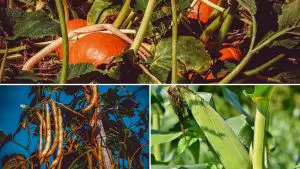
This comprises of growing corn pole beans and squash together in one patch. The beans grow up the corn plants, and the squash provides ground cover, preventing water evaporation and supressing weed growth. As the beans “fix” nitrogen in the air, there is more available for the other two members of this trio.
How Do Companion Plants Work?

Many plants exude chemicals through their roots or leaves that repel certain insects, or in some cases attract beneficial insects. Others add various nutrients to the soil either whilst alive or on decomposition. Some provide shade, enhance nutrient uptake, and/or provide support for other plants.
Why Companion Plant?
Surely the question should be why not companion plant? Companion planting,
Increases Yield
By growing companion plants that encourage pollinators you will increase crop yield. Also by deterring pests the plants can put more effort into producing seed, eg fruit.
Reduces Or Cancels The Need For Pesticides
By growing plants that repel pests or attract predatory insects, you will not need to use chemical pesticides. This in turn
Creates Biological Pest Control
This is how nature works, there are enough pests to keep the predatory insects thriving, without creating swarm like situations. Which
Encourages Natural Biodiversity
This is because pesticides are indiscriminate, they kill all insect life, making for a poor and unsustainable ecosystem.
Reduces Or Cancels The need For Herbicides
By growing ground cover plants, there will be no room for weed seeds to germinate.
Improves Soil Fertility
Less chemicals, and a biodiverse plant base adding needed nutrients to the soil will increase the fertility of the soil.
Can Be Used For Trap Cropping
Trap cropping is a system where plants that attract a certain pest are planted in one particular area. Once all the pests are on this plant it can be sacrificed, and added to the compost heap.
Beautifies The Garden
Adding herbs and flowers to the vegetable patch will make for a prettier display. Not just for us, but also for the pollinators.
Why Assisting Nature?
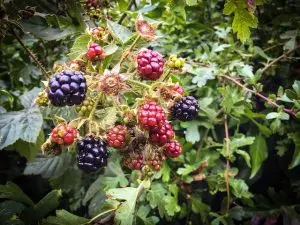
By using companion plants in your garden, you re emulating nature. Look at the woodlands and hedgerows. You will notice just how many diverse plants and insects are to be found. This works in nature so why not in your garden.
It’s only humans who want order to everything, nature has it’s own order and it’s worked successfully for millennia. Now I’m not encouraging untidiness per se, but adding a few flowers amongst your vegetables needn’t be untidy. If it increases your overall yield and plant health it must be worth considering.
Don’t take my word for it, there have been various studies done at numerous universities concerning companion plants. Follow this link for the Virginia State University paper on the benefits of companion planting. Or this from the University of California. Or this from the University of Bristol Botanic Garden.
Video Showing The Secrets Of Organic Gardening
Food For Thought-Or Other Things Worth Considering
There are many sceptics concerning companion planting, especially amongst the academic community. That’s why I often add links to academic papers to add some weight to my posts. As I see it the nature of science is to look at what someone says and try to disprove it.
Which is fine but is it the science of nature? See what I did there, but jokes aside, one of the arguments against companion plants is that as plants can’t move around, they have to fit in to their environment. This is not strictly true as seeds are distributed long distances by wind and of course bird and animal distribution.
That argument is also irrelevant in the garden, or farm, as we are in control of what gets planted. There are some plants that thrive in areas lacking certain nutrients, and actually produce these missing nutrients themselves. There is some spillage of these nutrients through the roots and then once the plant decomposes the nutrient balance is restored (more on this below).
Dynamic Accumulators
These are the types of plants that I touched on above, they thrive in areas of nutrient deficiency and add those missing nutrients to the soil. Some examples include,
Legumes
members of the pea and bean family that actually fix nitrogen in the air thus not needing any from the soil they are growing in. When they die, they add nitrogen to the soil, ready for the following crops to uptake.
Foxgloves (digitalis purpurea)
Foxgloves accumulate iron.
Thistles (cirsium spp.)
Thistles accumulate potassium.
Sheep’s Sorrel (rumex acetosella)
Sheep’s sorrel accumulates phosphorus.
Other Names For Companion Planting
For some of the academia it’s the actual word companion that causes them to stutter. They use the argument that we are guilty of anthropomorphism, or assigning human characteristics to other species. So, to not get bogged down in literal matters here’s a few different titles for companion planting.
Intercropping
This is a method of growing a crop in amongst a different type of crop. Or growing 2 or more crops in the same field simultaneously. Sound like companion planting to you?
Polyculture
This is the system of growing more than one species at the same time, in the same place to emulate nature. Polyculture is the direct opposite of monoculture. Notice anything?
Plant Association
Sometimes called a plant community, this is what biologists refer to when they are talking about a grouping of plant species that repeats across the landscape.
Interplanting
This is the practise of growing a fast growing crop in between a slow growing crop to make the best of the land.
What Does It All Mean?
It means the very people who are opposed to the term companion planting, are happy to use other terms that mean the same thing. Confused? Well don’t be, call it what you like, the name doesn’t matter.
It’s the practise that will help your plants.
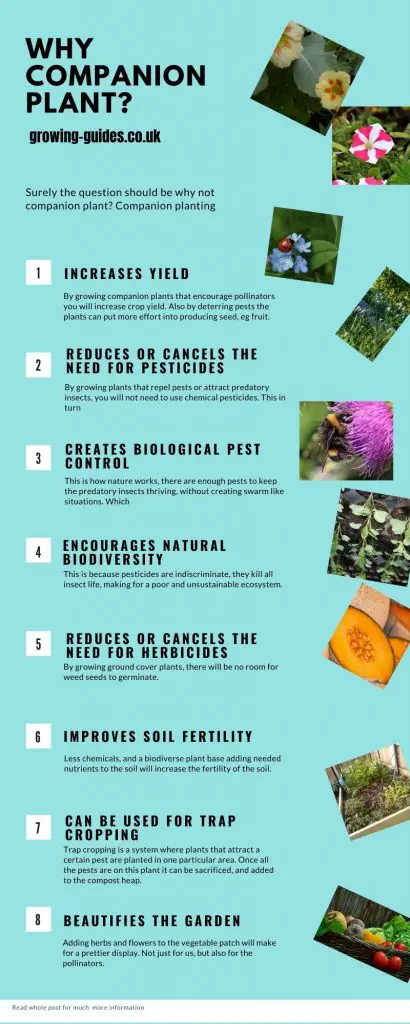

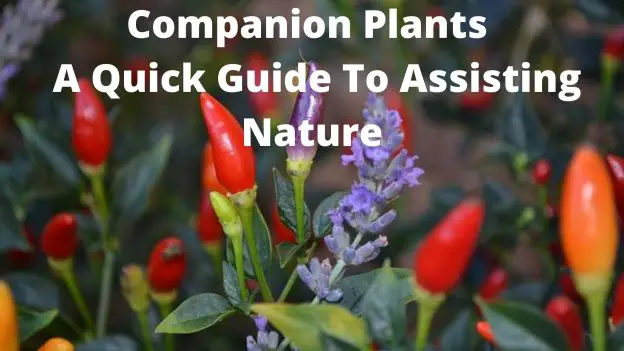
Thank you for your very interesting guide!
Hi Mar,
Thanks for taking the time to comment.
All the best
Steve